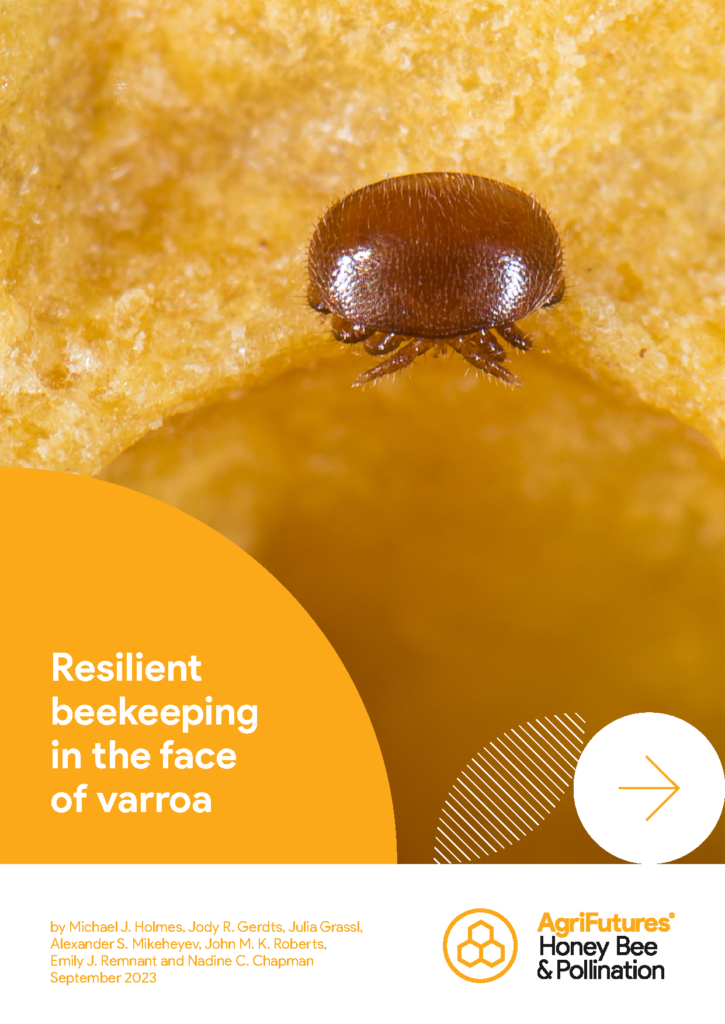The Australian honey bee and pollination industry is vibrant, with 1,800 highly skilled commercial beekeepers and 28,000 recreational beekeepers. The industry extracts 37,000 tonnes of honey each year from 530,000 commercially managed hives.
Many of these hives are used to pollinate 35 agricultural crops partially or fully reliant on European honey bees for pollination. In 2019, the almond industry, Australia’s largest user of paid pollination services, utilised 180,000 hives for crop pollination. This number is expected to expand significantly over the next 5-10 years.
The industry is not without its challenges, however, and arguably the biggest has been the incursion of Varroa destructor, which reached Australia’s shores in June 2022. In September 2023, eradication of the varroa mite was no longer considered feasible based on technical grounds, following advice from the Consultative Committee on Emergency Plant Pests (CCEPP). As such, Australia has entered a transition to management phase.
To support the industry through this phase, AgriFutures Australia has invested in research to understand what we know and don’t know about varroa, and how it may react under Australian conditions. The project involved a literature review, a survey and interviews with experts to develop a proposed national strategy for the management of varroa and to identify knowledge gaps and the research required to help beekeepers live with varroa.
The interviews and survey results revealed a clear theme that if Australia is to manage varroa effectively and maintain a resilient beekeeping industry, we must learn from the experiences of beekeepers and researchers around the world and devise a united national strategy based on integrated pest management (IPM) best practices to protect Australian bees. The management strategy developed as part of this project consist of two major phases: (1) mitigate the immediate impact of varroa on Australian beekeeping and honey bee pollination-reliant industries; and (2) develop best practice standards that set realistic and sustainable targets for living with varroa long term based on IPM principles.
The culmination of the literature review, survey and expert interviews identified five major areas of concern that early efforts to control varroa must focus on: biosecurity; treatment and management; breeding; bee health; and pollination continuation. The research and knowledge gaps were divided into four groups: research that should commence as soon as possible; research that should commence as soon as possible and that other research will rely upon; research that cannot be done until work under the previous two categories is underway/completed; and research that requires work under the other three groups to be underway/complete, or that cannot be done without varroa.
This report provides the industry with a long-term vision and a solid basis for the transition to management. The report articulates what we know about how the industry may be able to live with varroa, and the findings will be extended via a range of communication activities and fact sheets.





